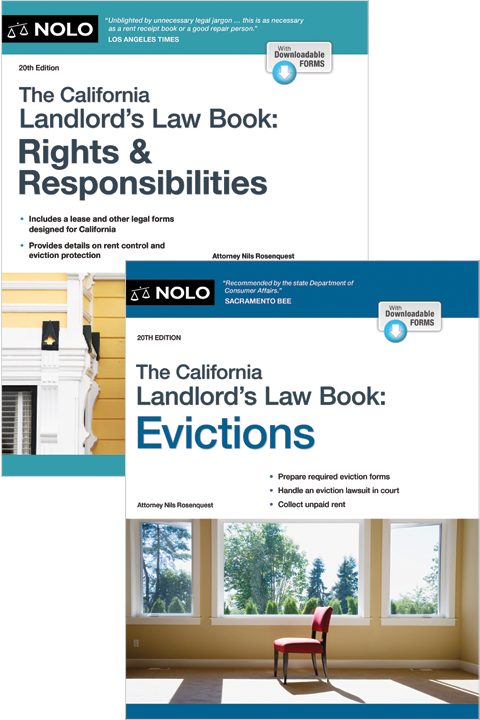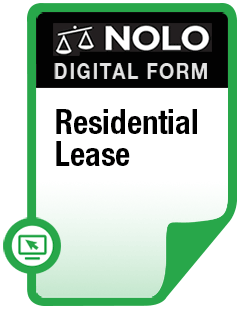A pet agreement can reduce a landlord's risks in a pet-friendly building. Here's what to include in the agreement.
Many landlords allow tenants to keep pets in their rentals. They do so either because they love pets or see the possible financial benefits for their property, such as a broader pool of potential tenants and reduced tenant turnover (because pet owners have fewer options). However, allowing pets on your property can pose risks such as additional property damage and pet-induced injuries.
You can reduce the additional risks created by having pets on your property by creating smart pet policies, putting them into a "pet agreement," and including the agreement as part of your lease. (Your lease should refer to the pet rules and incorporate them as part of your lease.) This provides notice to tenants that their continued tenancy depends on honoring these rules.
Require that all tenants sign the pet agreement, even non-pet owners. That way, if a tenant gets a pet later, they already know what the rules are and what is expected if they want to remain in their apartment.
Here are some common provisions to consider including in your pet agreement.
Identify the Types of Pets Allowed
Your pet agreement should specify which types of pets are allowed. Some landlords allow only common domesticated animals such as dogs, cats, birds, fish, guinea pigs, rabbits, hamsters, gerbils, and small reptiles. The agreement should also specify any limit to the number of pets allowed.
Address the Breeds of Dogs Allowed
To avoid potential liability, some landlords ban certain dog breeds that many people believe have a propensity toward violence, such as pit bulls and Rottweilers. Although the question of whether certain breeds are truly dangerous is a topic of controversy, landlords are legally entitled to ban these breeds from rental property. (Fair housing laws apply to human beings, not to dogs.) Before you allow such breeds, check with your insurer. Some companies won't issue liability policies if certain so-called "dangerous breeds" are kept on the property.
Consider Adding Weight Limits
Instead of, or in addition to, banning certain breeds, some landlords limit the weight of dogs. For example, a landlord might only allow dogs under 20 pounds.
Allow Only Tenants' Pets on the Property
In your pet agreement, make it clear that you allow only tenants' pets. You don't want your tenants caring for other people's pets in their rental unit. Also specify whether you will allow guests to bring their pets with them while visiting tenants.
Require Landlord or Manager Approval of Pets
Excerpted From
Every Landlord's Guide to Managing Property
Learn more about pet policies and how to protect your rental property investment.
Require that tenants get your approval for any pet they wish to keep in their apartment. You might wish to forego this approval requirement for certain types of pets that you don't think will cause problems or trigger complaints, such as goldfish.
Before you approve a particular pet, ask questions. For example:
- How long has the tenant had the pet?
- Where will the tenant get the pet (if not owned yet)?
- Has the pet has caused any property damage or other problems? And
- Who will look after the pet when the tenant is away?
You can find a complete list of potential pet interview questions on the Massachusetts Animal Coalition's "Tips for Landlords" website.
Finally, state that your approval is conditioned upon the tenants' continued compliance with the terms of your pet agreement. Make clear that you have the right to ask the tenant to remove the pet from your property or terminate the tenancy in the event of serious or repeated violations of the agreement.
Confirm Proper Identification, Licenses, and Vaccinations
Make sure tenants understand that all dogs and cats must wear identification collars or tags, which include proof of current vaccinations. Learn what your local ordinances require concerning regular cat and dog vaccinations and licenses, and insist that tenants give you current proof that they've complied (such as a copy of their municipal license receipt or the vet's bill).
Make Tenants Responsible for Their Pets
Tenants should agree to keep their pets under control at all times, so that they don't disturb other tenants and their guests. Require tenants to clean up after their pets, both inside their apartment, and in all common areas and other parts of your property. Tenants should also agree not to leave pets outdoors or unsupervised in their apartment for an unreasonable period of time, and to keep pets in appropriate, contained areas within their apartment. For example, small reptiles such as lizards should be kept in terrariums and birds should be kept in cages.
To further reduce the risk that a tenant's pet will injure other tenants or their guests, consider requiring your tenants to carry renters' liability insurance (assuming your state and local laws allow such a requirement) or another form of dog owners' liability insurance. If you do require this insurance, be sure the policy covers damage caused by pet accidents and that it doesn't contain a dog bite exclusion or other such limitation.
Consider Charging a Pet Fee
Many landlords routinely impose a "pet fee," in addition to the normal security deposit, reasoning that pets typically cause added wear and tear to an apartment. Think carefully before implementing such a policy, for these reasons:
- A fee might not be legal. In some states, such as California, landlords cannot charge more than a specified sum as a deposit. The total sum includes all types of deposits. So, if the total amount of the deposits that you charge to all tenants has reached the maximum, you cannot charge a pet deposit on top of that.
- A fee might not be a good idea. Setting aside a certain sum as a deposit to cover pet damage isn't always practical. Suppose a pet is well-behaved but the tenant who owns the pet is a slob. If part of the deposit is marked for pet damage only, you might not be able to use that money to clean up the tenant's mess. Often, it's better to impose a non-specific deposit.
- A fee must be reasonable. If you decide to impose a specified pet deposit, keep it reasonable, such as $200 to $300 per year. Otherwise, if your tenant challenges it, a judge might not enforce it.
Finally, do not impose a pet deposit or fee for a tenant who keeps a service or companion animal. Such animals aren't pets—they are animals needed to accommodate a disability.
Make It Easy to Change the Pet Agreement
From time to time, you might want to change your pet policy. For example, you might decide to no longer allow cats. So that you can easily make a change, state in your pet rules that you have the right to amend the rules by giving tenants reasonable notice (typically 30 days).
Consider a Grandfather Clause for Pet Policy Changes
A "grandfather clause" exempts tenants already in the building from having to comply with the new rules for pets they already had before the changes took place. The rules would apply to any new pets they get. Without a grandfather clause, some tenants might have to get rid of a pet that no longer complies. This is certain to trigger considerable resistance.
Nolo leases and rental agreements include pet clauses, useful whether you allow or don't allow pets. You'll find copies, with complete instructions, in Every Landlord's Legal Guide (or The California Landlord's Law Book: Rights & Responsibilities). For single-copy forms, including state-specific leases and rental agreements, see the Legal Products section of Nolo's website.
Talk to a Lawyer
Need a lawyer? Start here.
How it Works
- Briefly tell us about your case
- Provide your contact information
- Choose attorneys to contact you
- Briefly tell us about your case
- Provide your contact information
- Choose attorneys to contact you



